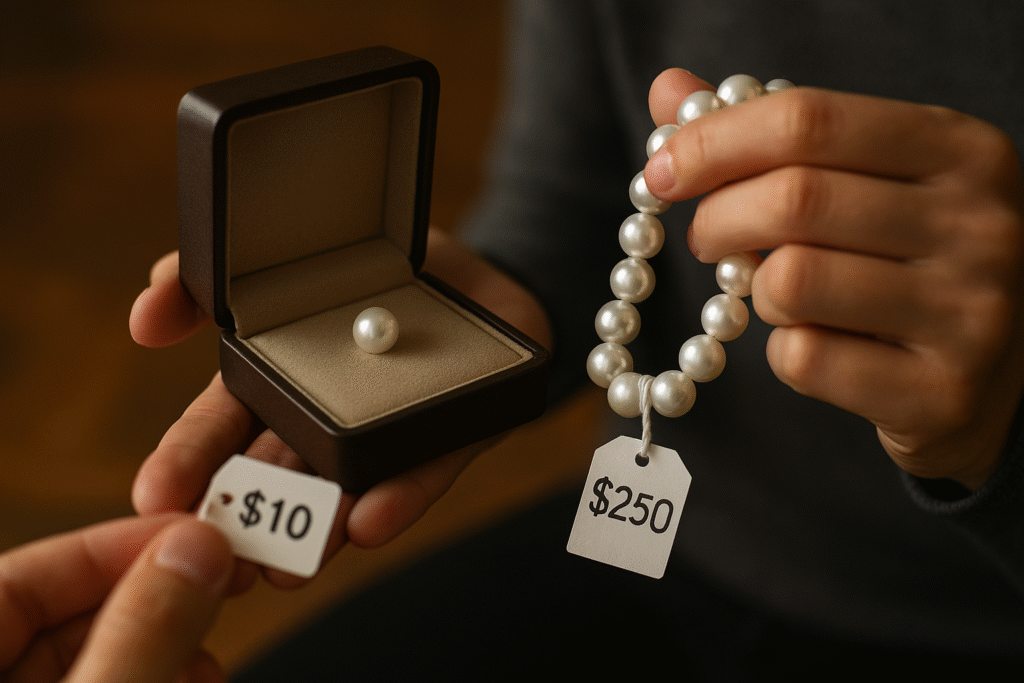Pearls at a bargain price often mean thin nacre, poor luster, bad matching, or even fakes. Learn how to spot these tricks and protect your money when buying pearls.
You walk into a shop and see a string of pearls at half the market price.
It feels tempting.
But before you reach for your wallet, ask yourself—what’s the hidden cost?
From my years in gemology, I’ve seen how sellers cut corners to offer pearls at throwaway prices.
Here’s what usually goes wrong:
- Thin nacre
A genuine pearl builds layers of nacre over time. Cheap pearls often have only a thin coating. They peel or dull quickly. - Poor luster
High-quality pearls glow with depth and reflection. Low-priced strands often look chalky or flat. - Bad matching
A true pearl necklace should show uniform size, color, and shape. Bargain strands often look uneven. - Imitation pearls
Some are glass beads coated with chemicals. They may look shiny at first, but they lack the natural beauty of real pearls.
A real story from my desk
A customer once brought me a necklace she bought as a “festival deal.” The price was too good to ignore. Within months, the surface began to chip, and the pearls lost all shine. She realized she had paid gold rates for beads with no lasting value.
What you should ask yourself
- Do you know the nacre thickness of the pearls?
- Do they have consistent luster across the strand?
- Is there certification from a trusted lab?
- Would you still buy them if they were priced closer to genuine pearls?
Practical tip
If the price feels like a steal, look deeper. Quality pearls require years to form. They cannot be rushed or mass-produced cheaply.
When buying pearls, let quality guide you—not just price.

